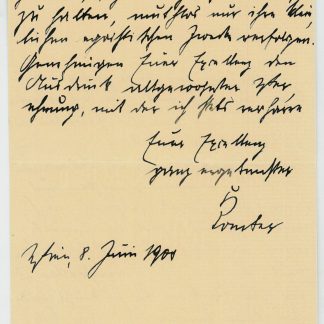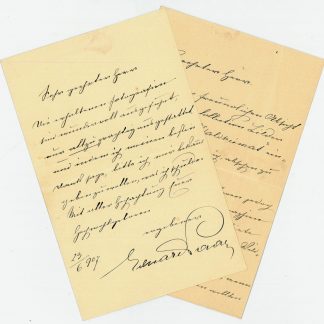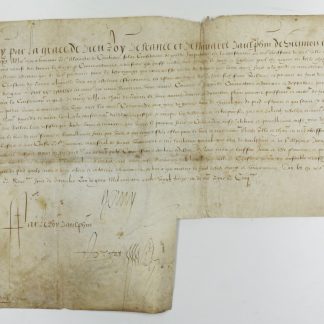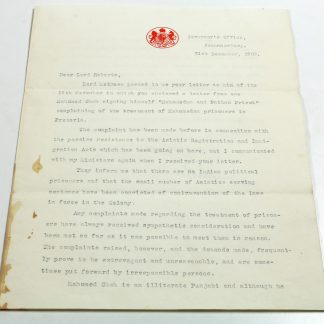[SOLD]
This item has sold. We are always interested in acquiring another copy or any item of comparable quality.
"Valete bene et perseverate scientes, quoniam necesse est vel ab hominibus vel a deo reprobari"
ALS.
Folio. 1 p.
In a handwriting surprisingly meticulous for a man anticipating his imminent death, Luther writes to his Wittenberg friends in October 1518. This very day, he plans to depart for Augsburg on foot, to the Imperial Diet, where the Roman Curia will charge him with heresy and the Dominican Thomas Cajetanus will question him for two days. If he refuses to recant, Luther knowns, he must die. The 31-year-old monk had denounced the selling of indulgences, had formulated his 95 theses and the principle of Reformation, according to which the relationship between man and God is based on grace alone, and had doubted Papal authority. The present letter is therefore regarded by Luther scholarship as a sort of last will. "Farewell and persevere steadfastly," he writes to his Wittenberg friends Philipp Melanchthon, Andreas Bodenstein von Karlstadt, Nikolaus von Amsdorf, and Otto Beckmann, "for one must be condemned either by man or by God. But God is true, while man is a liar." This unique epistle was long known to scholarship only by an extract of a few lines, printed in 1719. The original was lost for centuries - until it reappeared in the early 1960s in the collection of the Andover pathologist H. Spencer Glidden. Autographs from Luther's hand are very rarely offered on the market: eight years ago, a letter to the chaplain Joachim Mörlin, dated 1543, fetched 68,500 Marks at Bassenge; a brief fragment fetched 50,000 Euros at Stargardt last November. When John Pierpont Morgan bought a 1521 Luther letter to Emperor Charles V for 102,000 Reichsmarks ninety-nine years ago, he presented the ms. to Kaiser Wilhelm II, who in turn gave it to the Germanisches Nationalmuseum in Nuremberg.
Browned; with contemporary symmetrical brownstains. Triple horizontal folds broken; letter then mounted on a paper backing with sealing wax in the later 16th century.
Luther, Werke: Briefe XII (Weimar, 1967), no. 4214 (p. 13ff.). Roland H. Bainton, "Luther and Spalatin letters recovered in Boston", in: Archiv für Reformationsgeschichte 53 (1962), 197. Wilhelm Hammer, Die Melanchthonforschung im Wandel der Jahrhunderte III (1981), p. 644, no. A 4007a. Extracts in: Luther, Werke: Briefe I (Weimar, 1930), no. 96 (p. 208). German extract in: Luther Deutsch. Die Briefe. Ed. by Kurt Aland (²1983), p. 44f. Heiko A. Oberman, Luther. Mensch zwischen Gott und Teufel (Berlin, 1981), p. 209. Martin Brecht, Martin Luther. Sein Weg zur Reformation; 1483-1521 (Stuttgart, 1981), p. 242.





